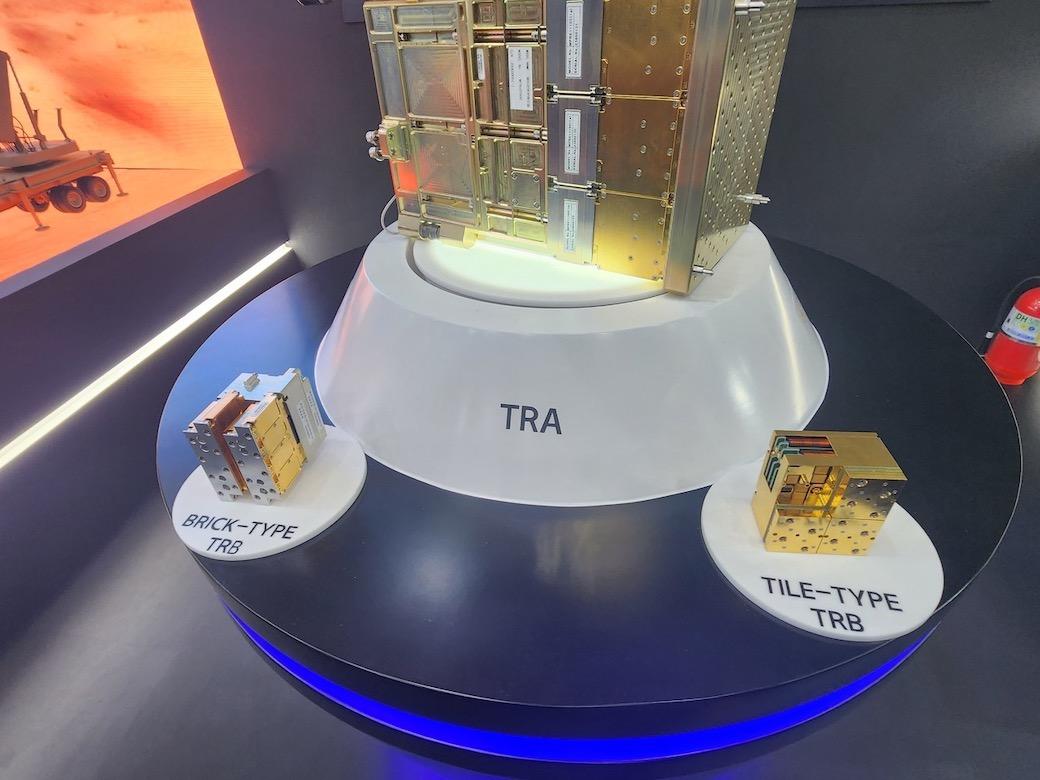
Photo shows comparison in size between brick- and tile-type TR blocks.
SEOUL—Hanwha Systems has unveiled a new active electronically scanned array (AESA) radar designed for light combat aircraft (LCA), uncrewed combat aerial systems and helicopters.
Based on the successes of the AESA radar installed on the Korea Aerospace Industries (KAI) KF-21 fighter, the smaller instrument will feature so-called tile type-transmitter/receiver (TR) blocks.
The LCA radar has around 500 TR modules, compared to more than 1,000 found on the original KF-21 radar. Unlike the “brick-type” TR blocks on the KF-21, these tile TR blocks are 35% lighter and 38% thinner. The weight is reduced further by opting for air cooling, which also ensures affordability and quick integration of the radar onto the aircraft.
Hanwha Systems officials told Aerospace Daily at Seoul ADEX 2023 that ground tests have been completed since March although the airborne test platform has not been selected. The official remained mum on the peak power and capabilities of the LCA radar, although he says he is “proud of the development and is confident it will perform better than its counterparts.”
Hanwha Systems and Italy’s Leonardo signed an agreement at the 2023 Paris Airshow to develop an AESA radar jointly for LCAs, allowing Hanwha to penetrate the radar market via Leonardo’s platforms. This could mean Leonardo M-346 and M-346FA LCA exports could have the South Korean radars.
In May, South Korean prime contractor LIGNex1 unveiled its own AESA radar for KAI FA-50 light fighters. Known as the ESR-500A, it also has around 500 TR cells and is geared to replace the Elta EL/M-2032 radar found on current FA-50s and compete with the Northrop Grumman PhantomStrike radar.





